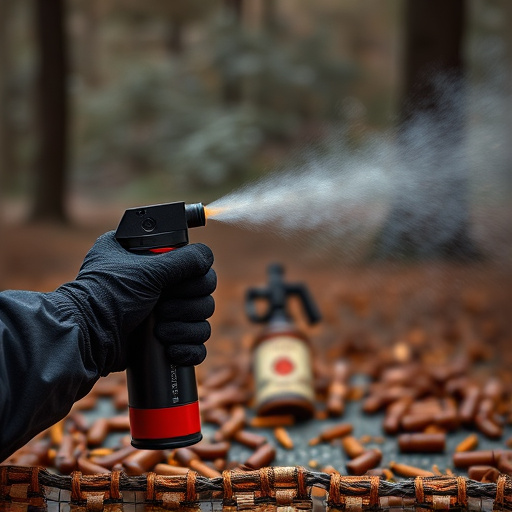Low light pepper spray is a crucial tool for police in low visibility conditions, enabling them to control crowds and disable suspects safely. Effective use requires training in application techniques, prioritizing public safety while disorienting rioters without causing excessive damage or injury. Law enforcement follows strict guidelines and regular training to ensure ethical, proportional tactics in diverse jurisdictions.
In today’s dynamic law enforcement landscape, riot control agents like low light pepper spray are indispensable tools. Effective management of riots in darkened environments requires specialized tactics, particularly when officers operate under challenging visual conditions. This article delves into the crucial role of low light pepper spray tactics, exploring legal considerations and deployment guidelines while emphasizing the importance of officer safety and public order maintenance.
- Low Light Pepper Spray: Essential Equipment for Officers
- Effective Tactics: Managing Riots in Darkened Environments
- Legal Considerations: Use and Deployment Guidelines
Low Light Pepper Spray: Essential Equipment for Officers
Low light pepper spray is an essential tool in a law enforcement officer’s arsenal, particularly during high-risk situations that occur in dimly lit environments. These specialized sprays are designed to disrupt and incapacitate suspects without causing severe injury, making them crucial for crowd control and dangerous encounters. The effectiveness of low light pepper spray tactics lies in its ability to quickly disorient and reduce the physical capabilities of a target, providing officers with the necessary time and space to gain control.
Officers need to be trained in the proper use of this equipment, including understanding the different spray patterns and distances for optimal effect. By mastering low light pepper spray tactics, law enforcement professionals can enhance their safety and efficiency during operations, ensuring the swift resolution of incidents while minimizing potential harm to both officers and suspects.
Effective Tactics: Managing Riots in Darkened Environments
Managing riots in darkened environments presents unique challenges for law enforcement, but effective tactics can make all the difference. One crucial tool in low light scenarios is low-light pepper spray. Designed to optimize visibility and disorient rioters, this specialized agent allows officers to maintain control even when sight lines are obstructed. Officers can strategically deploy it to target specific individuals or areas, minimizing damage to property and ensuring the safety of both citizens and police.
In these conditions, training becomes paramount. Law enforcement agencies must equip their personnel with skills to navigate labyrinthine situations, using sound and light manipulation to their advantage. Effective low-light pepper spray tactics involve quick application techniques, understanding rioter behavior in reduced visibility, and being able to adapt to sudden changes. By combining these strategies, law enforcement can efficiently manage riots, restoring order without escalating violence.
Legal Considerations: Use and Deployment Guidelines
Law enforcement agencies must adhere to strict guidelines when employing riot control agents, including low light pepper spray tactics, to ensure public safety and protect individuals’ rights. The use of such agents is regulated by a web of legal considerations that vary across jurisdictions. Officers are typically authorized to deploy these substances only as a last resort when non-lethal force proves insufficient.
Deployment guidelines emphasize proportionality, meaning the force applied should be reasonable and balanced against the threat at hand. In low light conditions, such as during night operations or in enclosed spaces, officers must be especially cautious. They are trained to use pepper spray tactically, targeting specific areas like eyes, face, and respiratory system, while minimizing exposure to bystanders. Regular training and updates on legal precedents are crucial to keep practices current and ethical.
In the face of escalating riot scenarios, law enforcement agencies must equip their officers with effective tools like low light pepper spray. Combining this specialized equipment with well-crafted tactics for managing riots in darkened environments, as discussed, allows for safer and more efficient crowd control. Understanding the legal considerations and deployment guidelines is paramount to ensuring these tactics remain within constitutional boundaries. By integrating low light pepper spray tactics into their repertoire, law enforcement can better navigate challenging situations, ultimately safeguarding both officers and citizens during civil unrest.
